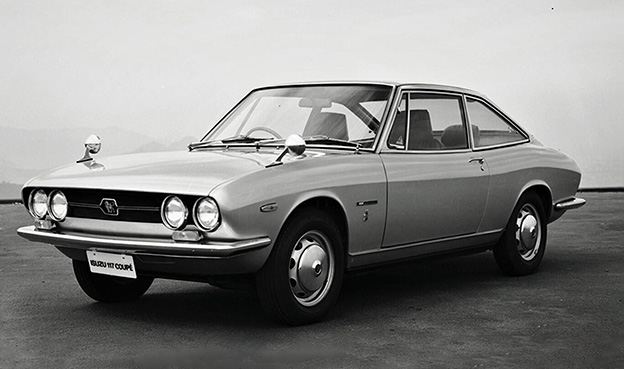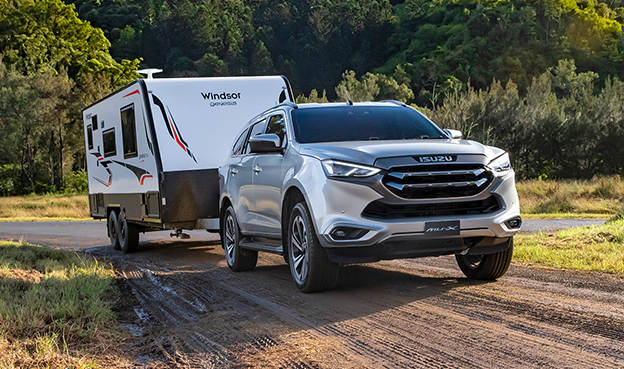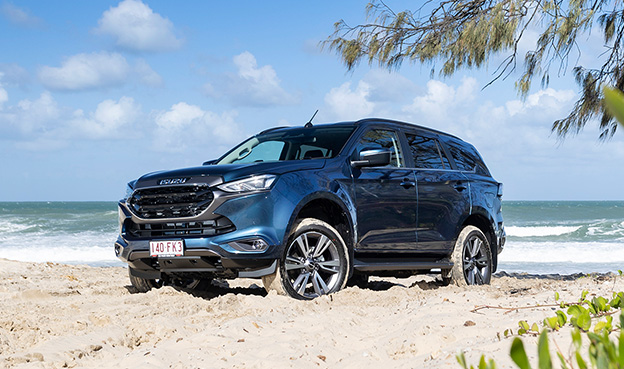

First things first: there's no substitute for experience, especially if it's gathered under the watchful eye of professional instructors. “Driving with a trailer is safe,” says I-Venture Club trainer, Matt Taylor, “until you forget it's dangerous”.
First there are the basics, such as taking corners wider than you would without a trailer, never altering both your speed and direction at once, and maintaining a constant vigilance to scan and plan. Then there's more intricate knowledge, such as driving etiquette, providing ‘spotter' advice to a reversing driver, or conducting comprehensive safety checks. Taylor knows it all—and there's no-one better to pass it along, as he does at I-Venture's regular Isuzu UTE customer sessions.
Finally, there's the rarefied knowledge understood only by those at the very top end, such as how to tow across a postapocalyptic future desert landscape in furious pursuit of Mad Max. Taylor knows that, too. Unfortunately we'll have to cover that off in a future issue. In the meantime, to tow your own way, here's a reminder of some of Taylor's teachings.
Check out the I-Venture Club upcoming events page to book your own hands-on lesson.
BACK IT UP, CHIEF

REVERSING TAKES TIME TO MASTER, HERE'S WHAT TO KEEP IN MIND
“If there's one thing we're asked to cover more than anything else, it's reversing,” says Matt Taylor. With 17 years' experience in the driver training industry, Taylor should know. And with a CV including gigs as a stunt driver in Mad Max: Fury Road and in the Team D-MAX precision driving team, Taylor does know that before you get radical, you've got to nail the fundamentals.
TURNING IS EASY, RIGHT? NO, THE OTHER RIGHT!
When you're going backwards, the trailer will move in the opposite direction to the steering wheel. So, if you're turning the wheel to the right, the trailer will go to the left. If you turn the wheel to the left, the trailer will go to the right.
KEEP IT STRAIGHT AND NARROW
If you see the trailer appear more in your right hand mirror, turn the wheel right to straighten it up. If you see the trailer in your left hand mirror, turn the wheel left to straighten it up again.
USE A SPOTTER
Either way, if you're at all unsure of what's happening behind you—including but not limited to the layout, surfaces and any potential obstacles—get out first and take a good look at exactly where you'll be reversing. “Wherever possible, try to use a guide to give you clear vision from outside the vehicle,” Taylor says. And their best position? “Ideally the spotter should stand at the front drivers' side corner of the car, facing the van or trailer, and walk with the driver as they reverse.”
SPEAK THE LINGO
The best spotter will be the one you're used to; over time, you'll develop the audible and visual shorthand to make communications simpler. This could be the driver's spouse, regular fishing partner, or a know-it-all-sibling who hasn't got the moxie to reverse the van themselves. Regardless, the most important and often forgotten aspect is to establish, understand and confirm the commands—including hand signals— between driver and guide.
PLAN THE MOVE
Before you ease off the brake—in fact, before you get back in the rig—make sure that the driver and guide are both clear on the planned route and final position. Check and double check, then move.
RIGHT IS (USUALLY) RIGHT
“If it's practical, always try to reverse to your right, or driver's, side,” says Taylor. It's easier to see where you're going and the angles are friendlier.
IDENTIFY YOUR PIVOT POINT
It's crucial to know where your van will pivot on its wheels. This will be the trailer's axle, or in a multi-axle set-up, the leading axle relative to the direction you're going. Understanding this point, and the angle between your trailer and your D-MAX or MU-X , will become second nature with practice—especially if you're always towing the same load.
LESS IS MORE
“It's not a great idea to go in like a bull at a gate,” says Taylor. “One of the easiest and most frequent mistakes is rushing into your campsite.” And remember that, when reversing, less is more. Smaller inputs. Slower speeds. Fewer turns of the steering wheel.GETTIN' HITCHED
When hitching and unhitching you've got to get the basics right.
“Getting hitched with a van or trailer, as in real life, is something you want give your full concentration,” Taylor says. “Like any marriage, if you take it slow and steady, you've got a better chance of being together at the end of a long and satisfying journey. And sudden break-ups are dangerous, expensive and could cost you your truck.”
Before beginning, make sure you're on level ground and have your vehicle and trailer or van lined up nice and straight. If there's a height difference between your trailer and load, you may need a jockey wheel. Ensure your electrics are properly connected once the tow hitch has snapped into position and fasten the chain for safety. When you're un-hitching, leave unhooking the safety chain for last—just in case—and either way, chock your wheels for extra piece of mind.
TRAILER SWAY CONTROL
Potentially deadly phenomenon —ironed out by technology.
“Trailers sway easily,” says Taylor. “A minor steering error, a gust of wind or a bump on the road surface can cause a critical increase in the swaying movement—and the counter steering and the acceleration of the towing vehicle make the critical situation more severe.” With the help of the ESC sensors, Trailer Sway Control—now standard on all D-MAX and MU-X models, and operating automatically when a trailer is attached— identifies these swaying movements of the trailer and intervenes by removing engine power and braking individual wheels of the towing vehicle. The vehicle and trailer are slowed to a safer speed and stabilised.

EMBRACE THE OPEN ROAD
Going your own way has never been easier—as long as you're willing to learn. Half of all MU-X and D-MAX buyers say towing strength was key to their purchase. Tow vehicles don't come any better. But that doesn't mean towing itself comes naturally. “Towing is more stressful than normal driving,” says Taylor. “That means it's more likely to cause fatigue.”
For one thing, checking your mirrors every five seconds, as the I-Venture Club recommends, along with monitoring crosswinds, road trains, and errant kangaroos, will sap your stamina fast. Plan more rest stops than you would on a normal journey, and reduce the overall distance you travel each day. “Better to be late in this life than early in the next,” says Taylor.
GEARING
Whether automatic or manual, your gear changes should follow the same general rules. “Change down when you drop below the torque band, and up when you go over peak power,” says Taylor. “Grab a lower gear in either auto or manual gearboxes (also known as engine braking) to increase control or to lower the chance of cooking your brakes when you're travelling downhill.”
A simple guide is to use the same gear to go up the hill as you would coming down. “Never coast downhill in neutral, or in gear with the clutch depressed,” says Taylor. Only use cruise control on flat, open roads.
KNOW YOUR TRAILER
Once your D-MAX or MU-X is loaded with the family, personal effects and the caravan on the back, you might be surprised with its overall heft. It pays to be familiar with your trailer's weight, length, width, height, frame length and wheel track. Booking a mobile weigh station to give you a weight report specific to your 4WD and van is a great idea for safety and peace of mind.“
Remember to allow for longer distances during braking, overtaking and merging,” says Taylor, “And if you're travelling in convoy, keep big gaps between each other. “In ideal conditions, a properly set up tow vehicle should comfortably hold 90–100 per cent of the speed limit,” says Taylor. Be mindful of overtaking lanes, use lay-bys if necessary, keep left and back off by 20 per cent if there is a queue behind.
OVERTAKING
Looking for a chance to overtake on a single lane highway can be stressful—and take a while. “Obviously it's important to be in the oncoming lane for as little time as possible,” says Taylor. “To do that, prepare by first pulling back from the car in front.” This will help you assess oncoming traffic and conditions as it's better to speed up before leaving your own lane. “Also use your GPS for straights and corners ahead.”
If you are the one being overtaken, says Taylor, “hug the left line, give a courtesy flash of the headlights for trucks and trailers, and always brake and defend before indicating when turning off”."If you're travelling in convoy—keep very big gaps between each other, for your own safety and that of anybody who might want to overtake you.”





